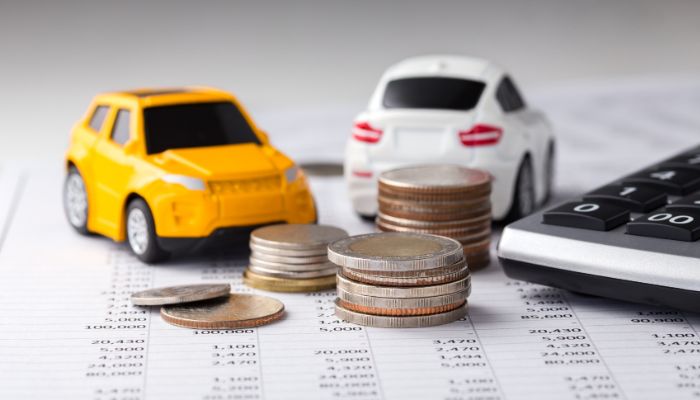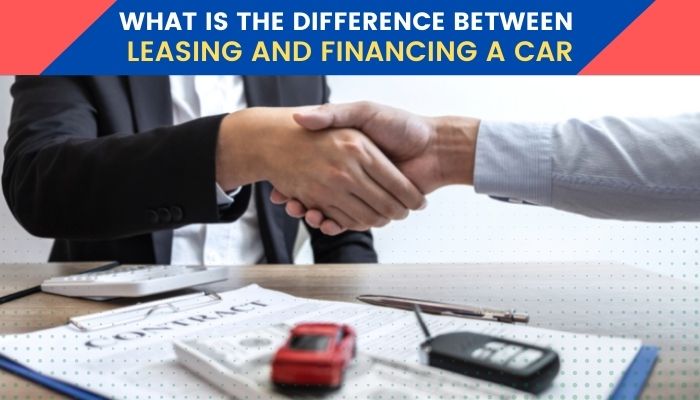Turning in a Leased Car with Low Mileage
After driving a leased vehicle for some time, the time comes when you must turn it in. It could either be before or at the end of the lease period. If you have never returned a vehicle before, you might be wondering what it involves. Most likely, the dealership has a program to alert you when the lease is approaching the end. With that, you can prepare for the eventual return of the vehicle. Or, you’re in the middle of the lease period and feel you no longer need the car.
Turning in a leased car with low mileage may mean buying out, leasing another vehicle, or simply walking away. However, the process of clearing with the dealership can be confusing. Even though the car has substantially low mileage, you have to grapple with end-of-lease charges, whether you should buy the vehicle, and what you should drive next. This article discusses everything you should know about turning in a leased car.
Possible Charges When You Turn in a Leased Car
When you turn in a leased car, the dealership will likely ask you to pay charges like mileage overage/underage, excess wear and tear, disposition fees, and late charges. Here is a detailed examination of each of the individual costs:
1. Mileage Overage
Car leases often have a preset annual mileage allowance, such as 12,000 miles per year. That means that a three-year lease would have a maximum of 36,000 miles. If you turn in the car with a mileage of less than 36,0000, it means that your vehicle has low mileage and won’t attract any charges.
You can know the remaining mileage allowance by dividing your current mileage by the number of months you’ve had the car and multiplying by the number of months in the lease. Here are two likely scenarios:
- Under-Mileage: This happens if the estimated mileage is likely to be under the allowance given by the dealership. Since you haven’t exceeded the mileage allowance, you can turn in the vehicle without charges. If you didn’t utilize the additional mileage you’d bought, the dealership will likely refund you.
- Over-Mileage: If you expect your mileage to exceed the allowance from the dealership, you have three options – resolve to drive less, pay the mileage overage penalty, or purchase the vehicle after the lease. Typically, dealerships charge $0.15 to $0.30 in mileage overage per mile, depending on the vehicle’s make and model.
2. Late Turn-in Charges
You can return a low mileage vehicle after the expiry of the lease period. While some dealers offer a grace period, others expect you not to go beyond the specified lease period. You’ll be required to pay a late return fee if you don’t meet the terms and conditions laid down by the dealership.
3. Excess Wear and Tear
When turning in a leased car with low mileage, dealerships expect it to be in perfect condition. If it isn’t, you may have to pay fees to take care of repairs. However, even with a low-mileage vehicle, that might not always be the case. If the car is dented or scratched, why don’t you have a specialist fix it before turning it in? Tires represent another crucial part of the vehicle. If they have 1/8-inch tread or less, be sure to replace them to avoid tire replacement charges. Overall, returning a less-than-perfect car can cost you up to $5,000 in additional charges.
Dealerships usually ask an independent company to inspect the vehicle before the lease expires. For that, you won’t have to pay anything. The inspector may visit you at home or the office and check the car for 45 minutes or so. The inspector notes all the damage to the vehicle and the expected cost. The following are some of the general categories of damage they look for:
- Abnormal or excess tire wear
- Cracks, excessive pitting, stars in windshield and windows
- Dents, dings, scrapes, and scratches on the exterior, wheels, and bumpers
- Stains or tears on the upholstery that won’t go away with normal refurbishing and repair
As part of their work, the inspectors may measure the depth and size of dents and scratches, entering the information into a computer template that automatically estimates the cost of repair. After the inspection, the dealership prepares a condition report before sending it to you. After reading the inspection report, you’ll have a rough idea of how much you should pay in charges.
4. Disposition Fee
A disposition fee is usually due when turning in the vehicle. The contract usually specifies the exact amount you’ll pay as a disposition fee. However, some dealerships can refund the disposition fee if you lease another vehicle immediately.
Equity When Turning in a Leased Car with Low Mileage
Did you know that turning in a leased car with low mileage can leave you with a substantial amount of equity? Say you have hired a car for 36 months on a 12,000 miles per year arrangement. That means that your mileage will be expected to be not more than 36,000 miles for three years. If you have driven the vehicle for only 16,000 miles, you have equity on your lease worth 20,000 miles.
Possibly, you could walk away with money in your pocket. The leasing company should essentially provide you with a payoff amount, which you can compare with the car’s estimated current value. If your vehicle is worth more than its payoff amount, the dealership may ask a third party to appraise it. After that, you’ll know the vehicle’s actual value and how much you can make after fully paying for the lease. Here is how to turn your low-mileage equity into cash:
1. Selling the Car to a Dealerships and Receiving a Check
Did you know that you can sell your leased car and cash in on the low-mileage equity? Approach a dealership other than the one that granted you the lease and ask to sell the vehicle to them. The dealership will purchase the car at the trade-in price, pay the leasing company for what you owe, and hand you a check for equity.
However, it may take a while before the dealership delivers a check to you. Don’t be in a hurry! The dealership needs to get a clear title and ensure that the vehicle has no outstanding parking ticket. As a precaution, you should ask to sign the trade-in agreement as you wait for the check.
2. Selling the Car to a Private Party (Lease Buyout Transfer)
You could also sell the vehicle to a friend, family member, neighbour, or someone you trust. Cashing in on your low-mileage equity means selling the car at a price that’s slightly higher than the trade-in price. Once you agree on the price, ask the buyer to write a check to the leasing company. The dealership will send you the vehicle’s title to sign and release to the buyer.
The buyer is free to register the car, secure insurance coverage, and pay sales tax. If the seller delays paying the sales tax for more than ten days, the state may ask you to make the payment. You can avoid that by delivering the DMV fee and sales tax and concluding the deal before handing over the title.
3. Using Equity as Down Payment for Another Vehicle
If you want to lease another car, you can use the equity in the current vehicle as a down payment. When turning in a leased car with low mileage, you can negotiate a new lease deal concerning the equity you hold in the old vehicle. In that, you need to negotiate vigorously to get an amount that’s as close enough to the leased-car buyout as possible.
Where possible, shop around for the best possible offer. A brand-to-to-brand exchange will possibly guarantee you a higher buyout. Therefore, if you have a Mazda, approach a Mazda dealership for the best price. After you’ve agreed on the amount of equity you should receive, fill it in the down payment section of the contract. Where the dealership requires no down payment, pay other lease fees using the equity.
4. Buying the Leased Car at a Lower Price
The chances are that you aren’t considering returning the vehicle or sell it to anyone else but buy it. Purchasing the car outright is also a good option. In that case, you’re ready to sacrifice the technological benefits of leasing another vehicle soon after the first one. Your low-mileage equity can significantly reduce the purchase price since the buyout price is based on the lease period and mileage limit. The following are the instances when you should consider buying the leased car instead of returning it:
- You Want the Car: You’re in love with that car and want to avoid shopping around for a new vehicle. Buying a car is the best way to prevent regular monthly payments for years to come. If the buyout price is fair enough, write a check to the dealership and assume ownership of the vehicle.
- The Car Has Equity on It: From the previous discussion, a car has equity when it’s worth more than its buyout price. Therefore, you can buy the vehicle, resell it, and pocket the difference. If the car has no equity on it, there is no need to buy it since it won’t benefit you in any way.
- Excess Wear and Tear: If the wear and tear in your car is excessive, it will have too many upholstery tears, dents, dings, and scrapes. You can avoid paying wear-and-tear penalties by purchasing the vehicle outright. Later on, you can fix the damage and keep using the car.
- You’re Under the Allowed Mileage: If the dealer won’t allow you to cash in on your low-mileage equity, the best option is to buy the vehicle. Afterwards, you can sell the car at a much higher price.
- Selling to a Friend: If your friend wants to buy the car, you can arrange a lease pass-through. Your friend can either take over the lease or purchase the vehicle at its buyout price, allowing you to benefit from the available equity.
Tips to Drive Less and Stay Under the Car Lease Mileage Limit
If you stay within the mileage limit, you can only turn in a leased car with low mileage. With that, you’ll avoid hefty charges and even qualify to trade in the equity on the vehicle. But how do you keep within a reasonable mileage? Here are some suggestions:
1. Use Public Transport
Driving to and from work is the single activity that can make you overshoot the lease mileage limit. If you reside in a city with reliable public transport, consider using it instead of the car. You could take the bus, light rail, or subway to work once in a while or the entire week. With that, you’ll drive less and stay within your mileage limit.
2. Swap Cars
How many people in your household have cars? If there’s anyone with a shorter commute, consider swapping cars once in a while. With that, you’ll drive less and avoid surpassing the mileage limit in the lease contract. However, this arrangement works best if the other party has the same insurance coverage as you.
3. Plan Ahead
Most drivers tend to drive more due to the lack of or poor planning. It helps consolidate all your errands into fewer trips or walk to the grocery store instead of driving. Ditching the car for walking or biking is also an effective way to stay fit and control the car lease mileage.
The Bottom Line
As you can see, turning in a leased car with low mileage presents an excellent opportunity to cash on equity. Unused mileage may put the vehicle’s value a little higher than its buyout price. With that, you can sell the car and get a check with a substantial amount. Alternatively, you can leverage the equity as a down payment for leasing a new vehicle. However, maintaining a lower mileage isn’t that easy. You have to look for ways to drive less such as taking public transport.
Frequently Asked Questions (FAQ)
What if I use fewer miles on my lease?
If you use fewer miles on your lease, you can either come out with no reimbursement or take advantage of any resultant equity. Leasing companies that provide no refund treat the contract as a time-based arrangement predicated on the lease period and nothing else. In that case, you may want to sell the vehicle to a private entity, another dealership or lease a new car with your equity as a down payment.
Can you get your money back when you turn in a leased car?
Yes. You can get money back when you turn in a leased car with a higher residual value than the buyout price. Alternatively, you could roll over the savings into another lease with the same company or reduce the vehicle’s purchase price.
Can you negotiate a car lease turn in?
Yes. You can negotiate a car lease turn-in, especially if you need to purchase the leased car. There’s a buyout price against which you can arrange for a better deal in the leasing agreement.
How do you stay under miles on a car lease?
You can stay under miles on a car lease by opting for public transport on your daily commute to and from work. Alternatively, you could swap cars with someone who doesn’t travel too much. Planning is also helpful in helping you drive the vehicle less. That may mean avoiding some unnecessary trips.




